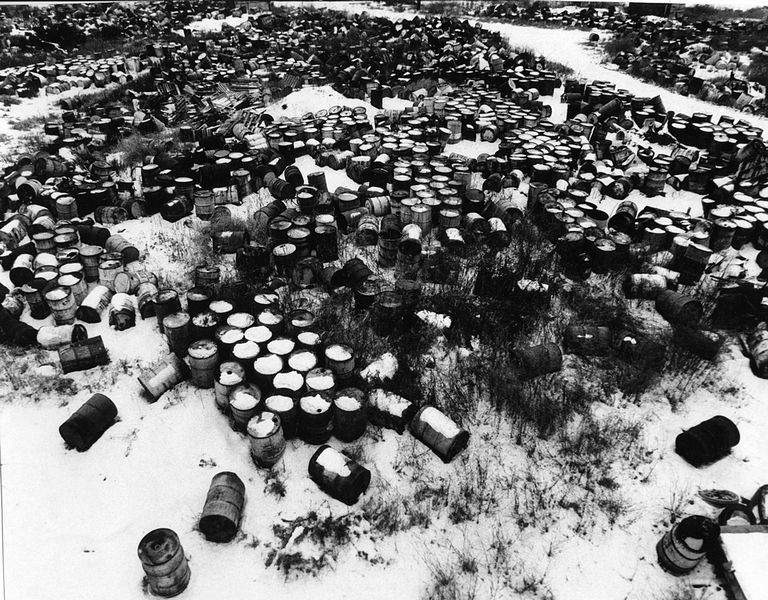During the 1960s, a 23-acre expanse in northern Bullitt County, Kentucky, just outside Louisville, became a disposal ground for toxic waste. The chemical waste came in metal drums that were either discharged directly into open pits and trenches, or buried wholly underground. Some sat on the ground for years until the drums deteriorated and broke open, spilling its hazardous content which got carried away by storm water runoff into the nearby Wilson Creek, a tributary of the Ohio River. It contained toxic chemicals such as benzene, toluene and methylmethacrylate.
Adjacent property owners frequently complained of strong odors, but in those days dumpsites were common and there were no laws regarding proper storage or containment of toxic waste. The site went unnoticed for years, until it caught fire in 1966 and raged for a week. The incident caught the attention of state officials, but the lack of environmental regulations allowed the site to continue operation until 1977.

Valley of the Drums, as it appeared in 1979. Photo credit: The Courier-Journal
In the meantime, a couple of regulatory bodies were formed and laws were passed such as the US Environmental Protection Agency, formed in 1970, and the Clean Water Act, passed in 1972. In 1979 conditions at the site became so bad that the Environmental Protection Agency initiated an emergency clean-up of the worst of the leaking drums. Workers on the ground quickly realized that the scope of the problem was far beyond their abilities at the time. After news of the problem became public the site was used by members of Congress as one of the reasons the proposed Superfund law was needed. Eventually, the Superfund Act of 1980 was passed and the Valley of the Drums, as the site came to be known, was placed on the nation's list of most toxic sites.
Cleanup of the site began in 1983, and officially ended in 1990, but problems continued to be reported for many years. As late as 2008, some 40 drums were still on the site. Investigations later revealed that over 100,000 drums of waste were delivered to the site, of which 27,000 drums were buried.
Workers pumped the contents from the barrels at the landfill. Photo credit: The Courier-Journal
Workers moved chemical drums in March 1979 to protect a small stream from contamination at the toxic-waste site. Photo credit: The Courier-Journal
The Valley of the Drums, as it appears today. Photo credit: Google Maps
Sources: Wikipedia / EPA / Courier-Journal / Green Criminology















Comments
Post a Comment